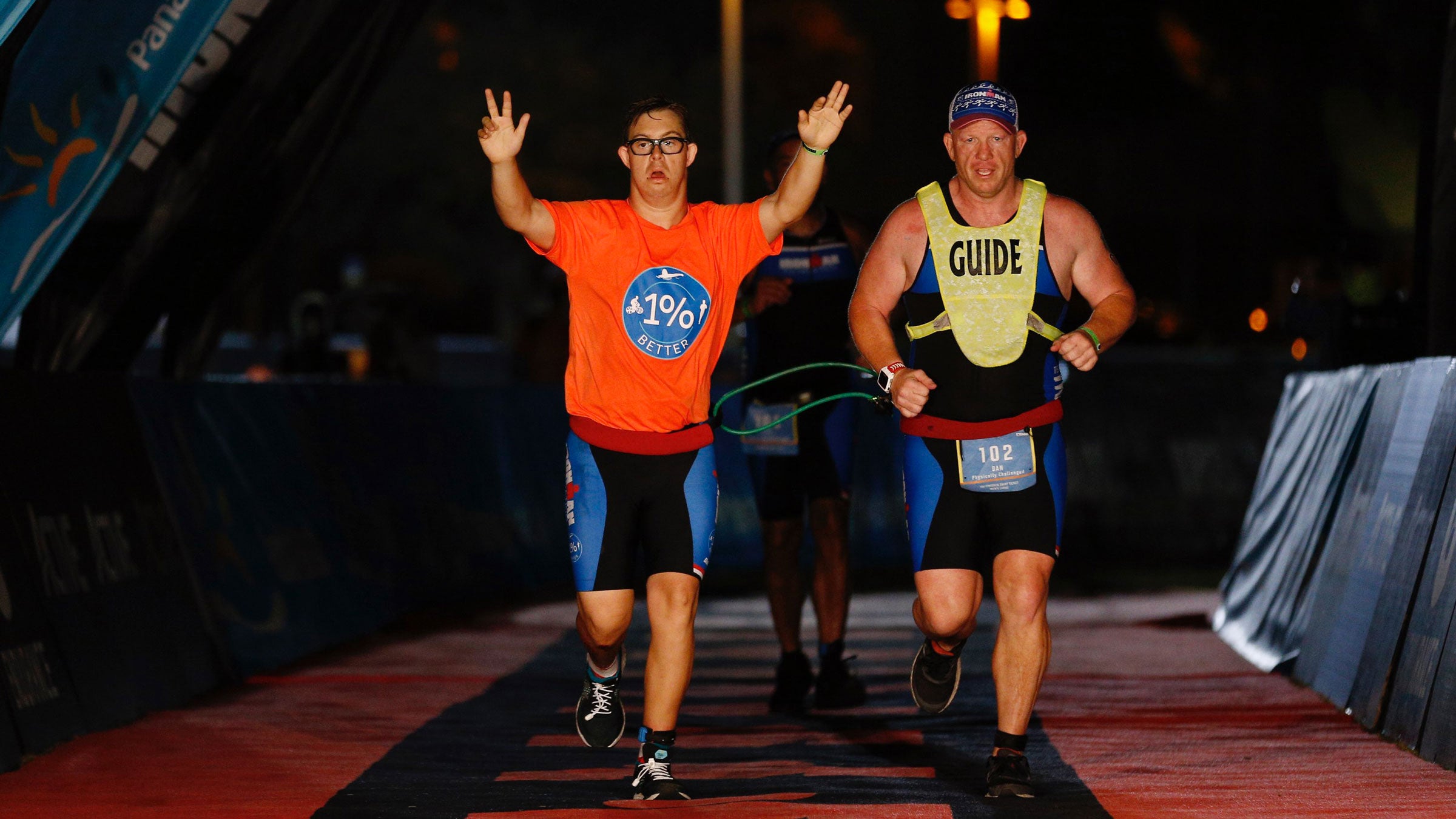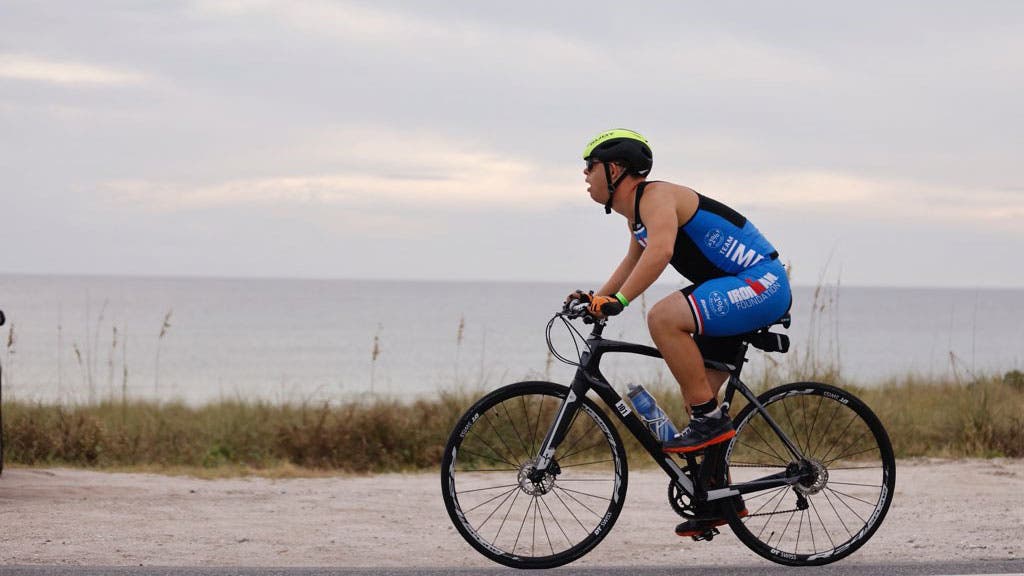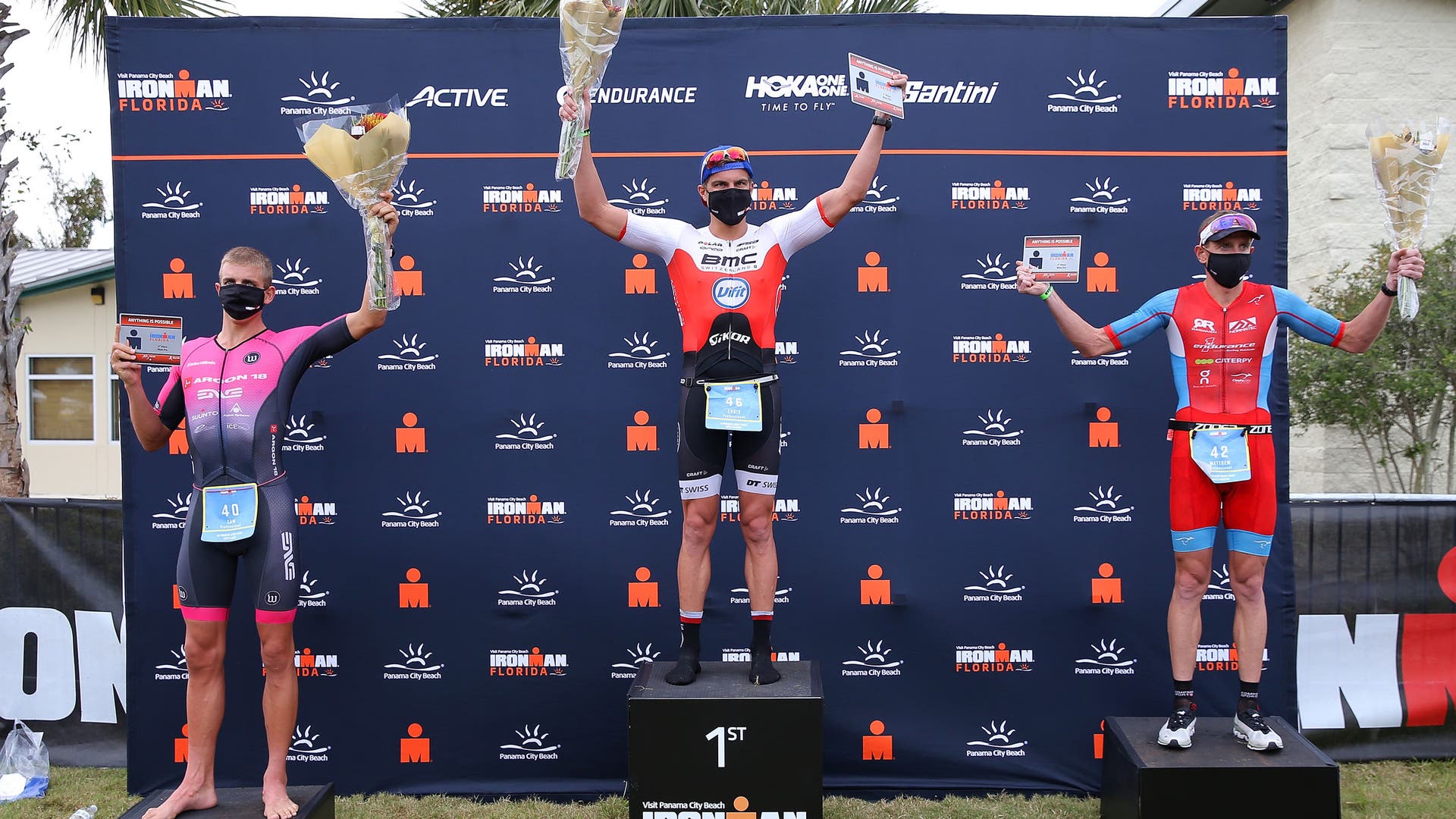Three Athletes' Perspectives on Ironman Florida: Chris Nikic, Matt Hanson, and Eric Reichart

Chris Nikic finished the race in 16:46:09. (Photo: Getty Images for Ironman)
Ironman Florida was one of the few triathlons of 2020 that was never postponed and never in any serious jeopardy of getting canceled. With COVID safety protocols in place, the race charged ahead this past weekend for its 21st edition—and it marked the first Ironman race with both a pro and age-group field in North America this year.
The day after the race, we checked in with three participants to get their take on what ended up being a hot and challenging day on one of the fastest courses on the Ironman circuit.
Chris Nikic
21, Maitland, Florida
16:46:09

A lot of people needed a really good story this year, and 21-year-old Chris Nikic delivered just that on Saturday, when he became the first person with Down syndrome to finish an Ironman. Racing alongside his coach and guide, Dan Grieb (a 16-time Ironman finisher), Nikic overcame high surf, a crash on the bike, and muggy conditions on the run to finish with just 14 minutes left to spare before the 17-hour cutoff.
“The run was really awesome because of all the people cheering for me,” Nikic said. “And when I got to the end, I just started running faster because of all the people cheering. I was so excited to hear them say, ‘You are an Ironman.’”
According to Grieb, Nikic had a spill on the bike while going downhill at about 19 mph. His knees were pretty scuffed up, but the thought of not getting back on the bike never crossed his mind.
“We engage in a lot of banter on the course to keep him going,” Grieb said. “At one point he said the S-word, and that turned into a four-hour conversation. That back and forth banter is how we get through the tough spots, like riding up a hill or a crash.”
Like most first-time Ironman finishers, Nikic is left with some blisters on his ankles and feet, but said he otherwise felt pretty good when he woke up the following morning. Don’t expect him to be the one-and-done Ironman type, either. He already has his sights set on the Ironman World Championship next October, as well as continuing his work as a public speaker. It’s a story people are clearly eager to follow. Over the course of the weekend, 30,000 people tuned in live to watch Ironman’s Facebook coverage of his finish—and Nikic went from 20,000 to 74,000 followers on Instagram. You can continue to follow Nikic’s journey at @chrisnikic.
Matt Hanson
35, Storm Lake, Iowa
7:55:02 (2nd overall)

Professional triathlete Matt Hanson has been very busy over the past few months. He’s made the move from Iowa to Colorado, and has jumped in every race he could find. This was Hanson’s fourth race over the past seven weeks, and it was by far his best. His 2:41:57 run was the fastest of the day, and early on it looked as though he might break the all-time Ironman marathon mark (a record that he owns at 2:34:40).
RELATED: Come Hell Or Cold Water: Pros Brawl, Adapt At Bear Lake
“The run was where the big differences were in terms of aid,” he said. “Instead of having an aid station every mile, they were about every two or two-and-a-half miles. If it were a cold race, it wouldn’t have been a big deal, but it got pretty steamy out there. So you really had to slow down to make sure you grabbed everything you needed.”
Hanson cut the lead to eventual winner Chris Lieferman down to 90 seconds at one point, but the lack of aid and the muggy conditions finally took their toll around the 20-mile mark, at which point it became more about hanging on for dear life and securing a Kona spot (which he did).
“I was lucky I made the decision to put a full bottle in special needs,” he said. “I ended up running with that bottle for the entire second half of the run. I’ve never run with a bottle like that, but it’s probably what got me to the finish.”
In a testament to how hot it got and how different an Ironman marathon is without aid every mile, Hanson said six out of the top 10 pros were taken away from the finish line on a wheelchair, himself included. While he would’ve liked to have some extra aid stations on the run, he said some of the protocols put in place because of COVID actually made the weekend better.
“It was definitely an anti-climatic finish line, that’s for sure, but it wasn’t all bad. The virtual pro meeting was great and hopefully that will become the new norm. It was nice to be able to do that while having dinner at the hotel.”
Eric Reichert
30, Elizabethtown, Pennsylvania
9:35:56
Competing in just his second full Ironman, Reichert finished fourth in his age-group and is now anxiously waiting to see if a Kona slot rolls down to him. It’s just his third year in the sport, so if he misses out this time, he should have plenty of opportunities in the future to get to Hawaii. Like Hanson, there were certain aspects of the COVID protocols that he’d like to see Ironman keep in place whenever we get to the post-pandemic era of racing.
“Speaking with a few of the people I came down here with, we all liked how they did time slots for the bike check-in,” he said. “It was way more efficient. Maybe that’s something they carry on doing. But it also made it seem like no one was there. Until race morning, we were all joking that there would only be 400 people at the start.”
RELATED: These Were The Protocols At The First Ironman-Brand Event In The U.S. Since The Pandemic
Reichert also felt things were pretty normal on the bike. Ironman Florida is a one-loop ride through some pretty desolate parts of the Florida panhandle, so it’s not like there are ever spectators out there cheering athletes on. Special needs was the big difference, as there weren’t people there to hand out the bags. That meant athletes who wanted their bag had to stop and find it themselves, which Chris and the rest of the front-pack age-groupers chose not to do.
“The run was the only part of the race that felt different with the aid stations spread every two miles. I think people were really feeling that,” he said. “Normally, you see people running through the aid stations, but this time, people were being smart and walking through to get everything they needed.”
Reichert is confident that Ironman is on the right track to return to a more normal race schedule in 2021, even if that means the finish lines won’t be quite as raucous as we’re used to.
“I think Ironman has this figured out,” he said. “I felt safe out there. I think it’s more about athlete compliance to really nail it and get back to normal racing. The finish line definitely wasn’t the same, but you still can’t take away from the Mike Reilly effect at the culmination of a really long day.”